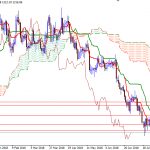During the decade of the seventies, there was an opening. The Bretton Woods system had largely failed in 1960, but gold exchange lingered onward until August of 1971. Long before President Nixon acted in defaulting on US obligations, however, global currency liquidity had increasingly been supplied through other means.
Those “other” means was an offshore ecosystem that though rudimentary compared to 21st century operations was every bit a global currency as the eurodollar of today. Dollars still dominated here but given the US’ economic and inflationary struggles there was an opportunity for others to exploit grave and growing worldwide dissatisfaction.
Japan seemed the logical choice to overthrow the dollar, even the whole Western-based paradigm. It was the growing Asian giant, the industrial powerhouse situated as the gateway to untapped Eastern markets. Japanese officials began preparations for a global yen alternative to the dollar by undertaking the necessary steps toward building an infrastructure. Not long ago I recalled:
For Japan’s government, though they may have been reluctant to relax regulations the figured it could be worth it if this represented the initial move toward a long-sought goal. There was, almost everyone anticipated, the opportunity particularly during that specific decade to turn the yen into a global currency.
Two years before Sears’ Samurai, the European Investment Bank had issued the world’s first euroyen bond. As with eurodollars, euroyen have nothing whatsoever to do with Europe’s modern euro. The term “euro” when applied to a currency simply means “offshore.” Thus, EIB’s 1977 float was a debenture denominated in yen but issued outside of Japan in Europe.
You can’t just up and replace one denomination with another. No matter how aggressive the Japanese became in the seventies and eighties, there was no real threat to the dollar from the yen. JPY would become a global reserve in some ways, but not really what everyone thinks when using that particular term.
In the wake of Japan’s 1990’s financial disaster, the Europeans next sought the same status. The European supereconomy paired with a supercurrency, the euro, was meant to challenge the dollar as the yen once tried. Predictions varied, but by and large it never really came to fruition, either. This despite the creation of what is a lovely bit of representative ridiculousness, the euroeuro.








Leave A Comment